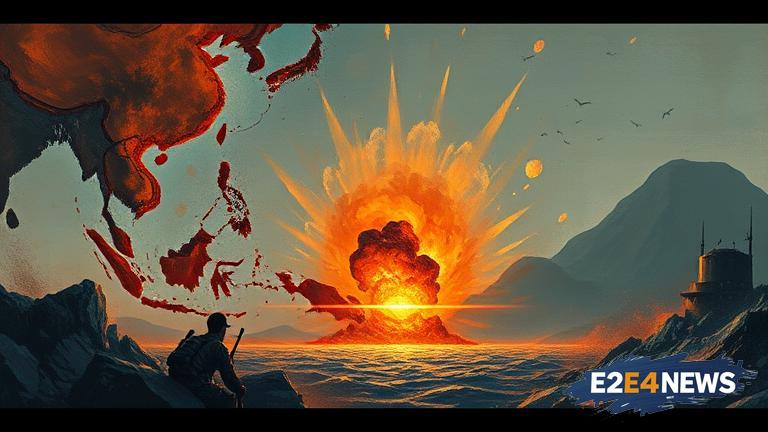The Pacific region is witnessing a significant escalation of tensions, with several nations engaging in a complex game of cat and mouse. The situation is precarious, with the potential for a miscalculation or misstep to spark a full-blown conflict. At the heart of the issue is the ongoing rivalry between the United States and China, with both nations vying for dominance in the region. The US has long been the dominant power in the Pacific, but China’s rapid military modernization and expanding economic influence have challenged this status quo. China’s assertive behavior in the South China Sea, including the construction of artificial islands and the deployment of military assets, has raised concerns among its neighbors and the US. The US has responded with a series of freedom of navigation operations, designed to challenge China’s claims and demonstrate its commitment to regional security. However, these actions have been met with hostility by China, which views them as a threat to its sovereignty. The situation is further complicated by the involvement of other nations, including Japan, South Korea, and Australia, which are increasingly concerned about China’s growing military presence. The risk of a miscalculation or accident is high, particularly in the South China Sea, where the US and Chinese militaries are operating in close proximity. A single misstep could lead to a rapid escalation of tensions, with potentially catastrophic consequences. The economic stakes are also high, with the Pacific region accounting for a significant proportion of global trade. A conflict would have far-reaching consequences, including disruptions to supply chains and potential losses for businesses and investors. The diplomatic efforts to resolve the situation are ongoing, but the challenges are significant. The US and China have fundamentally different views on the region’s future, and finding common ground will be difficult. The international community is watching the situation with bated breath, aware that a conflict in the Pacific would have global implications. The US and its allies are working to strengthen their military presence in the region, while China is continuing to modernize its military and expand its economic influence. The situation is complex and multifaceted, with no easy solutions in sight. As tensions continue to rise, the risk of a conflict grows, and the international community must remain vigilant and work towards a peaceful resolution. The consequences of a war in the Pacific would be devastating, and it is essential that nations work together to find a way forward. The region’s future is uncertain, and the coming months will be critical in determining the course of events. The world is holding its breath, hoping that diplomacy and restraint will prevail, and that the Pacific region can avoid the devastating consequences of conflict.




